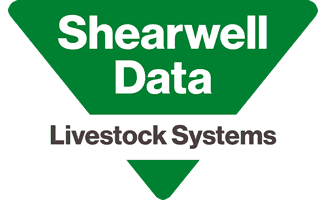FAQ
Got a question? Not sure what to do, how to do it or even why to do it? Take a look below and if you still can't find the answer, please just get in touch by mail [email protected] or call us on 1800 998 934.
We send a leaflet out with every applicator (reproduced here):
Below is an example of a tag bucket file containing 4 tags. This file is for management tags so the NLSID column is empty.

This is how it looks in a spreadsheet application:

Shearwell offers all NLIS-accredited Year-of-Birth colours for sheep and goat eID tags, following the national eight-year rotation used across Australia. These colours make it easy to identify the year animals were born and ensure compliance with NLIS requirements.
Table D2: Year of Birth Colour System for sheep and goats
| Year | Tag colour | Year | Tag colour |
|---|---|---|---|
| Any year | Post-breeder tags must be pink | ||
| 2013 | Yellow | 2021 | Yellow |
| 2014 | Red | 2022 | Red |
| 2015 | Sky blue | 2023 | Sky blue |
| 2016 | Black | 2024 | Black |
| 2017 | White | 2025 | White |
| 2018 | Orange | 2026 | Orange |
| 2019 | Light green | 2027 | Light green |
| 2020 | Purple | 2028 | Purple |
In addition to NLIS colours, Shearwell also supplies a wide range of management colours across our SET, BOS and visual tag ranges. These are commonly used for mob identification, mating groups, classing, and general on-farm organisation.
Electronic Identification (EID) uses a microchip embedded in an ear tag to give each animal a unique digital identity. Shearwell eID tags are a great choice for meeting all Australian National Livestock Identification System (NLIS) and state-based requirements and are mandatory for sheep and goats born after 1 January 2025.
Shearwell NLIS eID tags are engineered for high retention and long-term reliability across Australian sheep and goat enterprises. With correct placement and handling, they provide secure identification that supports compliance, traceability, and on-farm performance tracking.
Shearwell eID tags enable producers to:
- Comply with the mandatory eID requirements in all Australian states
- Track growth and liveweight over time
- Monitor reproduction and lamb survival
- Record treatments and health interventions
- Improve drafting accuracy
- Support selection decisions using in-flock production data and Australian Sheep Breeding Values (ASBVs)
These capabilities make flock management more precise and help improve productivity across Australian sheep and goat enterprises.
By linking individual performance data to breeding decisions, Shearwell eID tags support objective selection of rams and ewes. This results in faster, more accurate genetic progress and higher flock productivity without guesswork.
Tagging and Retention
Shearwell tags are designed for high retention when applied correctly. Best practices include:
- Only use Shearwell applicators and follow placement instructions
- Dipping tags in disinfectant before application
- Maintaining clean, low-dust, low-mud handling conditions
- Minimising snag hazards such as fences, scrub or hay twine
- Tagging animals in good body condition
On-Farm Benefits of eID
Ordering and Support
Cattle Tags
The MET tag is designed for Australian cattle operations and offers:
- High retention rates: Engineered to remain securely in the ear under normal farm conditions
- Durable stainless steel construction: Resistant to rust and wear, with anti-infection coating
- Embedded HDX chip: Waterproof and reliable for electronic scanning
- Laser-etched visual number: Clear, long-lasting visual identification
- Two colour options: Supports herd management and grouping
The Shearwell Easy Squeeze applicator is designed to make tagging cattle and sheep easier, faster, and more comfortable for both the operator and the animal. Its mechanical advantage reduces the amount of hand force needed, making it ideal for producers who tag large numbers of animals or work in tougher handling environments. Key benefits include:
- Reduced hand strain: The Easy Squeeze mechanism provides extra leverage, so less effort is needed compared with standard applicators.
- Fast, smooth tagging: Designed for quick, consistent application of Shearwell BOS visual tags.
- Flip-Pin safety option: The Flip-Pin model improves safety if an animal moves suddenly, reducing the risk of the pin causing injury.
- Lightweight but strong: The aluminium body is durable, comfortable to hold, and suitable for both cattle and sheep.
- Deep jaw design: Allows easy access to both small lamb ears and larger cattle ears.
Reliable performance: Built for regular use in Australian conditions and well-suited to producers wanting dependable equipment. The Easy Squeeze applicator is a practical choice for anyone wanting accurate tag placement, operator comfort, and efficient workflow when applying Shearwell BOS tags.


